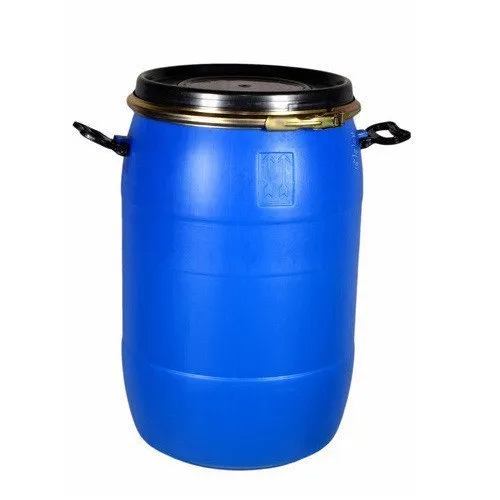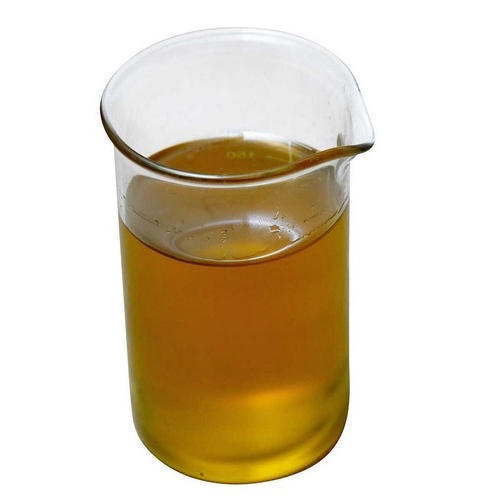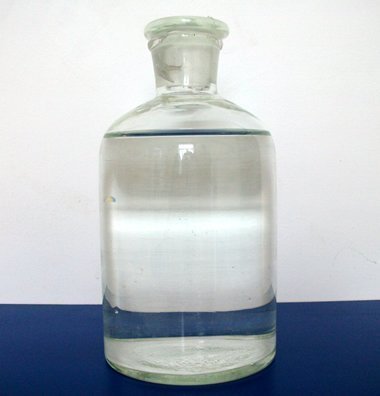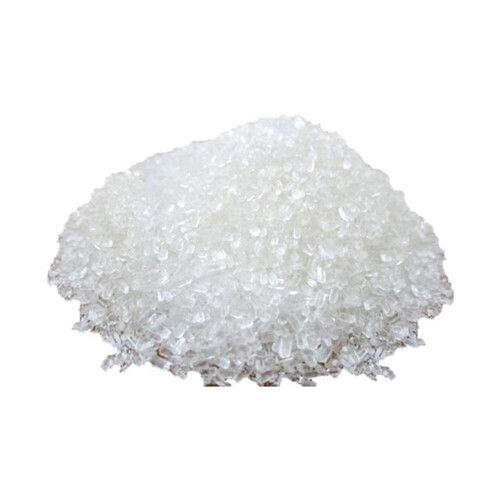Welcome to Our Company
2 Ethyl Hexanol
180 INR/Kilograms
Product Details:
- Product Type 2 Ethyl Hexanol
- CAS No 104-76-7
- Physical Form Liquid
- Application Industrial
- Storage Room Temperature
- Usage Pharmaceutical intermediates,Synthesis of esters,Defoaming agent
- Click to View more
X
2 Ethyl Hexanol Price And Quantity
- 100 Kilograms
- 180 INR/Kilograms
2 Ethyl Hexanol Product Specifications
- Room Temperature
- 2 Ethyl Hexanol
- Industrial
- Liquid
- 104-76-7
- Pharmaceutical intermediates,Synthesis of esters,Defoaming agent
2 Ethyl Hexanol Trade Information
- 7-10 Days
Product Description
2-Ethylhexanol (also known as 2-ethyl-1-hexanol) is a chemical compound with the molecular formula C8H18O. It is a colorless liquid with a characteristic mild odor. The "2-ethyl" part of the name indicates that there is an ethyl group (C2H5) attached to the second carbon atom in the hexane chain (6 carbon atoms).
2-Ethylhexanol is an important industrial chemical and is primarily used as a precursor in the production of various products. One of its main applications is in the manufacturing of plasticizers, specifically dioctyl phthalate (DOP) and other phthalate esters. Plasticizers are added to plastics to improve their flexibility, durability, and processing characteristics. They are commonly used in the production of PVC (polyvinyl chloride) products such as pipes, cables, and vinyl flooring.
Apart from its use in plasticizers, 2-ethylhexanol is also used as a solvent in various industries, including coatings, paints, and adhesives. It serves as an intermediate in the production of chemicals, such as 2-ethylhexyl acrylate and 2-ethylhexyl nitrate. Additionally, it finds application in the formulation of personal care and cosmetic products.
Like any chemical substance, 2-ethylhexanol should be handled with care, and safety precautions must be observed during its handling, storage, and transportation. It is essential to follow the guidelines provided by manufacturers and regulatory authorities when working with this chemical.
2-Ethylhexanol Uses:
1. Plasticizers: 2-Ethylhexanol is a crucial building block in the production of plasticizers, such as dioctyl phthalate (DOP) and other phthalate esters. These plasticizers are added to plastics, particularly PVC (polyvinyl chloride), to increase their flexibility, softness, and workability. PVC products like pipes, cables, vinyl flooring, and coatings often contain 2-ethylhexanol-derived plasticizers.
2. Solvent: 2-Ethylhexanol is used as a solvent in various industries, including coatings, paints, and adhesives. It helps dissolve and disperse different components in these formulations, improving their performance and application properties.
3. Intermediate in Chemical Synthesis: 2-Ethylhexanol serves as an intermediate in the production of other chemicals. For example, it can be used to produce 2-ethylhexyl acrylate, which is utilized in the manufacturing of coatings, adhesives, and other polymer products.
4. Personal Care Products: Due to its mild odor and chemical properties, 2-ethylhexanol is used in the formulation of personal care and cosmetic products. It can be found in products such as lotions, creams, and hair care items.
5. Lubricants and Cutting Fluids: 2-Ethylhexanol is used in the formulation of lubricants and cutting fluids due to its ability to improve lubricity and reduce friction, enhancing the performance of metalworking processes.
6. Extraction and Separation Processes: 2-Ethylhexanol is used in some extraction and separation processes to isolate certain compounds from mixtures.
7. Fuel Additive: In some cases, 2-ethylhexanol can be used as a fuel additive, improving the combustion characteristics of certain fuels.
2-Ethylhexanol Properties:
Chemical Properties:
1. Molecular Formula: C8H18O
2. Molecular Weight: 130.23 g/mol
3. Chemical Structure: CH3-CH2-CH(CH3)-CH2-CH2-CH2-CH2-OH
Physical Properties:
1. Appearance: 2-Ethylhexanol is a colorless liquid at room temperature.
2. Odor: It has a mild, characteristic odor.
3. Density: The density of 2-ethylhexanol is approximately 0.829 g/cm3 at 20 degree centigrade.
4. Melting Point: The melting point of 2-ethylhexanol ranges from -76 degree centigrade to -71 degree centigrade.
5. Boiling Point: The boiling point of 2-ethylhexanol ranges from 176 degree centigrade to 183 degree centigrade.
6. Solubility: 2-Ethylhexanol is slightly soluble in water but readily soluble in common organic solvents, such as ethanol, ether, and chloroform.
7. Vapor Pressure: The vapor pressure of 2-ethylhexanol is relatively low at room temperature.
8. Flash Point: The flash point of 2-ethylhexanol is typically above 93 degree centigrade, making it relatively safe to handle.
9. Viscosity: 2-Ethylhexanol has a moderate viscosity, which can affect its handling and processing in various applications.
10. Refractive Index: The refractive index of 2-ethylhexanol is approximately 1.427 at 20 degree centigrade.
11. Octanol/Water Partition Coefficient (log Kow): The log Kow value of 2-ethylhexanol is around 3.5, indicating moderate lipophilicity.
Safety Considerations:
While 2-ethylhexanol is considered to have relatively low toxicity, it is still essential to handle it with care. Direct contact with the skin and eyes should be avoided, and appropriate safety measures, such as using gloves, goggles, and proper ventilation, should be employed when working with this chemical. Additionally, it is important to follow the guidelines provided by manufacturers and regulatory authorities for safe handling and disposal.
FAQ:
Q: What is 2-Ethylhexanol used for?
A: 2-Ethylhexanol is primarily used as a precursor in the production of plasticizers, such as dioctyl phthalate (DOP) and other phthalate esters. These plasticizers are added to plastics to improve their flexibility and durability. 2-Ethylhexanol is also used as a solvent in coatings, paints, and adhesives, and as an intermediate in the synthesis of various chemicals.
Q: Is 2-Ethylhexanol toxic?
A: 2-Ethylhexanol is considered to have low acute toxicity. However, like any chemical substance, it should be handled with care. Direct contact with the skin and eyes should be avoided, and proper safety measures, such as wearing gloves and goggles, should be followed when working with this chemical.
Q: What are the physical properties of 2-Ethylhexanol?
A: 2-Ethylhexanol is a colorless liquid with a mild odor. It has a density of approximately 0.829 g/cm3 at 20 degree centigrade, and its boiling point ranges from 176 degree centigrade to 183 degree centigrade. The melting point is between -76 degree centigrade to -71 degree centigrade. It is slightly soluble in water but readily soluble in common organic solvents.
Q: Is 2-Ethylhexanol flammable?
A: 2-Ethylhexanol is flammable and has a flash point typically above 93 degree centigrade. It should be stored and handled away from sources of ignition.
Q: What are the safety precautions when handling 2-Ethylhexanol?
A: When handling 2-Ethylhexanol, it is important to follow appropriate safety precautions. This includes wearing protective clothing, such as gloves and goggles, to avoid direct contact with the skin and eyes. Proper ventilation should be ensured in the work area, and ignition sources should be kept away from the chemical.
Q: Can 2-Ethylhexanol be used in personal care products?
A: Yes, due to its mild odor and chemical properties, 2-Ethylhexanol can be used in the formulation of personal care and cosmetic products, such as lotions, creams, and hair care items.
Q: What is the shelf life of 2-Ethylhexanol?
A: The shelf life of 2-Ethylhexanol can vary depending on storage conditions. It is typically stable for several months to a few years when stored in tightly sealed containers away from direct sunlight and extreme temperatures.
Q: Is 2-Ethylhexanol biodegradable?
A: Yes, 2-Ethylhexanol is considered biodegradable under certain environmental conditions.
Q: Can 2-Ethylhexanol be used as a fuel additive?
A: In some cases, 2-Ethylhexanol can be used as a fuel additive to improve the combustion characteristics of certain fuels.
Q: How is 2-Ethylhexanol produced?
A: 2-Ethylhexanol can be produced through the hydration of 1-octene, which is obtained from petroleum-derived raw materials. The process involves adding water to 1-octene in the presence of an acid catalyst to form 2-Ethylhexanol.
Tell us about your requirement

Price:
Quantity
Select Unit
- 50
- 100
- 200
- 250
- 500
- 1000+
Additional detail
Mobile number
Email









